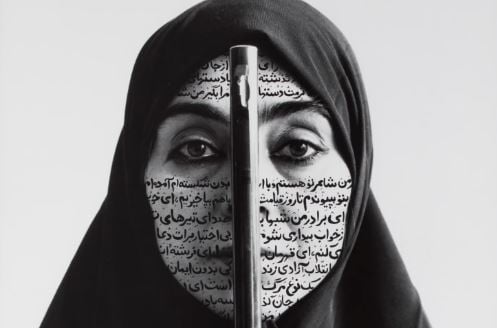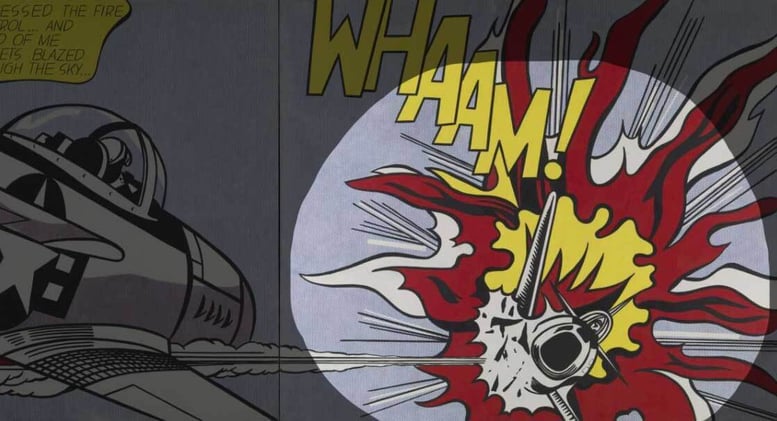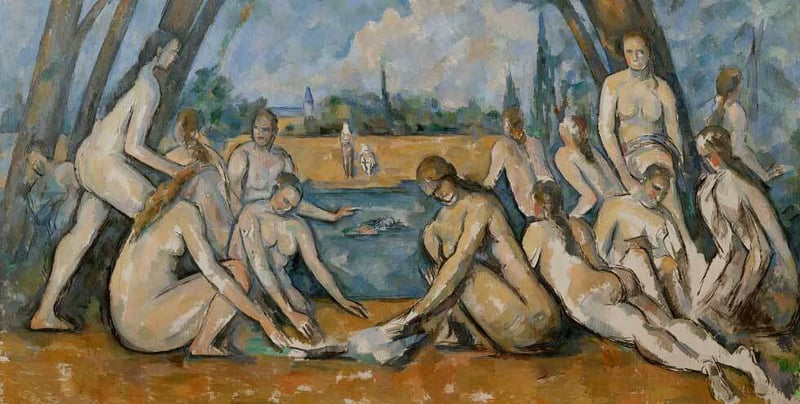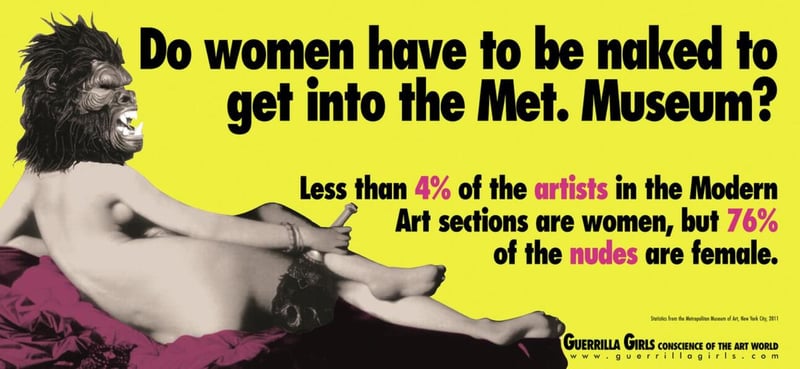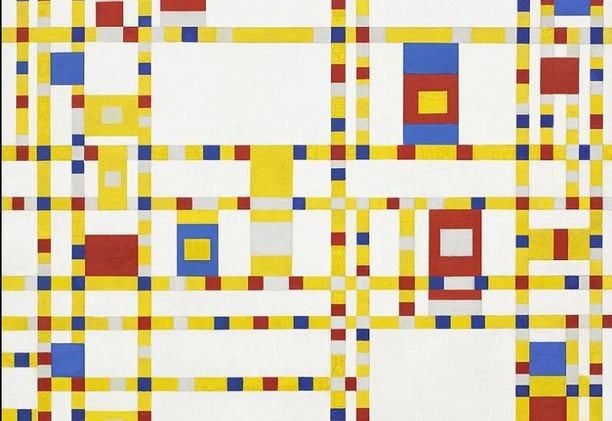- Crazy Pablo
- Archive
- Page -1
Archive
Rebelling with Silence: Shirin Neshat and the Women of Allah
The photograph Rebellious Silence from the Women of Allah series suddenly felt very now. Not because it's trendy. Because it still stings. When one image holds still, but everything around it keeps shifting—you know it hit something real.

Crazy Pablo: When War Becomes Pop
Whaam! is a painting in two parts. Like an open comic book, one panel shows the hero, the other the blast. It’s bold, graphic, and weirdly bloodless.Blam! Pow! Oops—another war, lost in the scroll.Can we look at war without flinching?Roy Lichtenstein thought so.

Cézanne’s Silent Revolution: The Bathers in the River
Something about Cézanne’s world feels newly awake. Maybe it’s the festival in Aix-en-Provence, where his mountain, his bathers, even his apples seem to stir with life again. I found myself pulled back into his paintings—Cézanne’s cool blues always draw me inward—to a place that feels both mystical and still.

Dancing in a Grid: Mondrian’s Broadway Boogie Woogie
What are the signs that a cultural capital is shifting? Is it when artists start to leave? When investors arrive? When Disney builds a theme park? This week, after reading about the new Disney opening in Dubai, I kept thinking about cities, rhythms, and how cultural gravity quietly moves from one place to another. It reminded me of a painting by Mondrian—one that feels like someone tuning in to a new city for the first time.

Not One Woman: De Kooning’s Woman I
Some images feel familiar even when they’re completely strange.When I saw Woman I again recently, I realized how much it isn’t about a woman. It’s about the image of woman—what it’s been, how it shifts, and how it keeps returning in different forms.De Kooning painted this as part of a series—Women I–VI—over several years. Not portraits. Not muses. Something older, messier, harder to define.

Saved by His Own Hand: Fujita Who Drew Cats
We’ve seen how Foujita painted war. But what did he turn to after the noise?Cats.Not just as animals—but as symbols of calm, softness, and maybe even survival. After the chaos, Foujita found a different kind of power: one that didn’t shout or demand, but simply was. His cats aren’t just pretty—they’re healing.

No Glory Left: Foujita’s Descent into Chaos
Last week, we stood at the edge of control—war rendered with eerie precision.This week, we fall in.In Last Stand of Attu, Foujita abandons balance entirely. Gone are the clean lines and quiet faces. What’s left is cold, crowded, and collapsing.It’s still beautiful. But now the beauty hurts. Let’s take a breath and step inside.

Beauty at War: Foujita and the Elegance of Violence
This week I chose a painting that deals with violence during wartime—a heavy subject, I know. But one of the gifts of art is that it lets us look at difficult things from a safe distance. It creates space to feel, to ask, and to reflect—without fear.Let’s take a quiet moment to look closely at a work that is anything but quiet.

Georgia O'Keeffe’s Black Iris – A Desert Bloom Up Close
I love slipping into a zone where everything else fades away—the noise, the distractions, the rush of the world. Some artworks make this effortless, pulling you into a space of stillness and focus. Georgia O’Keeffe’s Black Iris does exactly that. It invites you to zoom in, lose yourself in its details, and let your eyes gently trace each curve and fold, as if seeing through touch. It’s a chance to see the familiar in a completely new way.

